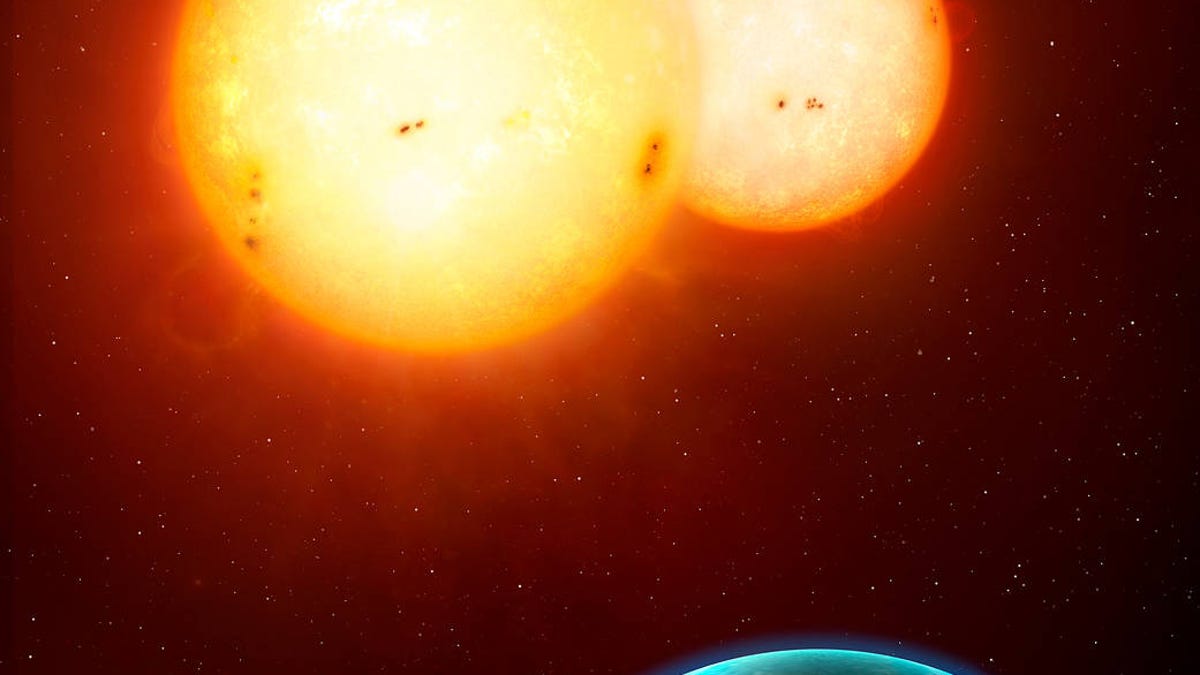Real-life Star Wars Tatooine could be a beachy destination
We've found planets around twin suns before, but none seem habitable so far. New research finds it's worth continuing the search.

An artist's rendition depicts the Kepler-35 planetary system.
We've known for some time now that planets orbiting twin suns -- just like Luke Skywalker's Star Wars home world of Tatooine -- exist in the real universe. Heck, there's even been a planet spotted in a triple-sun system. So far, though, these worlds have all been inhospitable gas giants -- not quite the desert world of Skywalker's youth.
But a study published last week in the journal Nature Communications finds that an Earth-like, habitable planet in a double-star system should be able to exist at the right distance from its two suns.
Previous research has shown Earth-sized rocky planets should be able to form in binary star systems, and now researchers have gone a step further to determine that such a planet wouldn't have to be a dry, desert world like Tatooine. It could retain and even be covered in water for a long time.
"This means that double-star systems of the type studied here are excellent candidates to host habitable planets, despite the large variations in the amount of starlight hypothetical planets in such a system would receive," said Max Popp, from Princeton University and the Max Planck Institute of Meteorology in a statement.
Popp and postdoctoral scholar Siegfried Eggl from Caltech and NASA's Jet Propulsion Laboratory came up with a model for a water-covered, Earth-like planet in the Kepler 35 binary system, essentially replacing the giant planet that actually orbits the two stars there. They then ran the model to see what the climate would be like on their imaginary water world as it worked its way through a wobbly, non-circular orbit around two suns.
They found that if the planet were on the edge of the system's habitable zone, it could see pretty major temperature swings throughout the course of a year, but orbiting closer to the stars in the system, weather would remain more stable.
"Our research is motivated by the fact that searching for potentially habitable planets requires a lot of effort, so it is good to know in advance where to look," Eggl said. "We show that it's worth targeting double-star systems."
Should we ever find a hospitable, Tatooine-like world worth visiting, the views could be spectacular. The researchers' climate model shows that a watery planet around two stars would have less cloud coverage, making for better visibility for watching those epic double sunsets.
Solving for XX: The industry seeks to overcome outdated ideas about "women in tech."
Crowd Control: A crowdsourced science fiction novel written by CNET readers.

